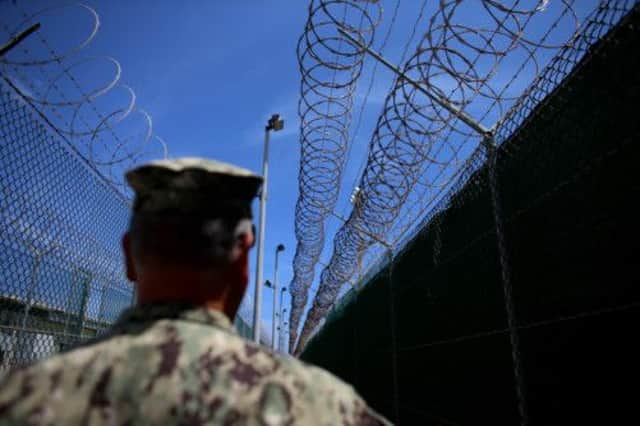US turned Guantanamo prisoners into agents


The CIA promised the prisoners freedom, safety for their families and millions of dollars from the agency’s secret accounts.
The programme operated in the early years after the 11 September, 2001 attacks on America and was carried out in a secret facility built at Guantanamo Bay, Cuba.
Advertisement
Hide AdAdvertisement
Hide AdThe eight small cottages were hidden behind a ridge covered in thick scrub and cactus. Those who were aware of the cluster of cottages knew it best by its codename “Penny Lane”, a nod to the CIA’s other secret facility at Guantanamo Bay, a prison known as “Strawberry Fields”.
Nearly a dozen current and former American officials have described aspects of the programme. Some of the men who passed through Penny Lane helped the CIA find and kill top al-Qaeda operatives. However, others stopped providing useful information and the CIA lost touch with them.
When prisoners began streaming into Guantanamo Bay in January 2002, the CIA recognised it as an unprecedented opportunity to identify sources.
“Of course that would be an objective,” said Emile Nakhleh, a former top CIA analyst. “It’s the job of intelligence to recruit sources.” He did not discuss Penny Lane.
By early 2003, Penny Lane was open for business. Candidates were taken from prison cells to the relative luxury of the cottages, which were designed to feel more like hotel rooms.
Current and former officials said dozens of prisoners were evaluated but only a handful, from a variety of countries, were turned into spies who signed agreements to work for the CIA.
CIA spokesman Dean Boyd declined to comment.
The US government confirmed that about 16 per cent of former Guantanamo Bay detainees rejoined the fight against America. Officials suspect that another 12 per cent also rejoined US opponents.
Though the number of double agents recruited through Penny Lane was small, the programme was significant enough to draw keen attention from president George W Bush.
Advertisement
Hide AdAdvertisement
Hide AdShortly after taking office in 2009, president Barack Obama ordered a review of the programme because double agents were providing information used in Predator drone strikes, an intelligence official said.
Candidates for Penny Lane needed legitimate terrorist connections – to be valuable to the CIA, the men had to be able to go back to al-Qaeda. From the Bush administration descriptions of Guantanamo Bay prisoners at the time, the CIA would have seemingly had a large pool to draw from. But in reality, many were held on flimsy evidence and were of little use to the CIA.
Prisoners agreed to co-operate for a variety of reasons, officials said. Some received assurances the US would relocate their families. One thought al-Qaeda had perverted Islam and believed it was his duty as a Muslim to help the CIA destroy it. One agreed to co-operate after the CIA insinuated it would harm his children.
All were promised money – altogether, the US paid millions of dollars for their services.
Officials said the programme ended in 2006, as the flow of detainees to Guantanamo Bay slowed to a trickle. The last prisoner arrived there in 2008.
Long abandoned, the Penny Lane cottages still stand and can be seen in satellite photos.